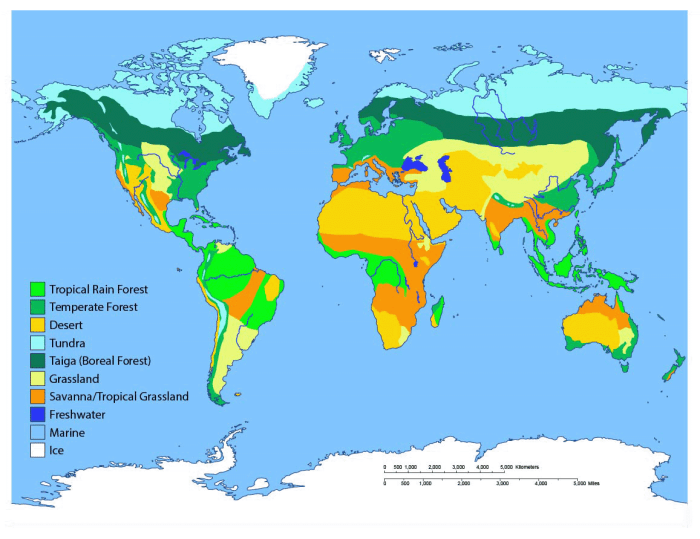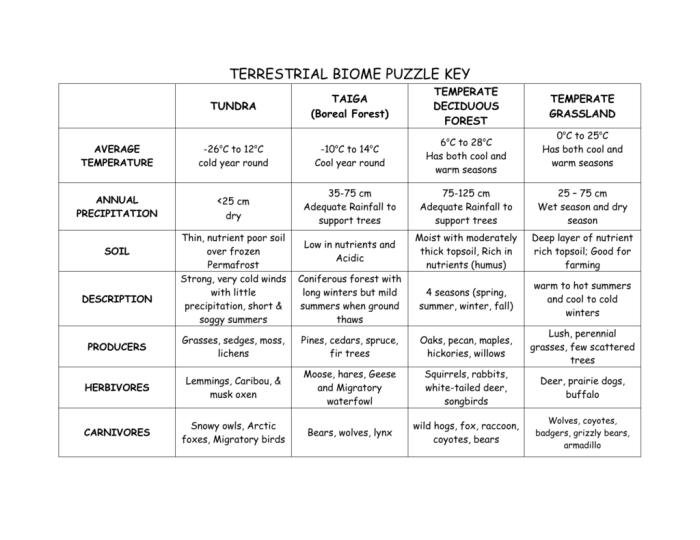Introducing the Aquatic Biomes Domino Puzzle Worksheet Answer Key, a comprehensive guide to unlocking the mysteries of Earth’s aquatic realms. Through an interactive puzzle format, this resource unravels the intricate connections between different water habitats, their unique characteristics, and the diverse life they support.
Delving into the heart of aquatic biomes, this worksheet delves into the defining features of freshwater, saltwater, and estuarine ecosystems, exploring their temperature variations, salinity levels, and vegetation profiles. It illuminates the remarkable adaptations of organisms that thrive in these diverse environments, highlighting their evolutionary strategies for survival.
Aquatic Biomes Domino Puzzle
An aquatic biomes domino puzzle is a fun and engaging way to teach students about the different types of aquatic biomes. By matching the dominoes together, students can learn about the key characteristics of each biome, including the water temperature, salinity, and vegetation.
Domino puzzles also help students develop their problem-solving skills and spatial reasoning.
Creating an Aquatic Biomes Domino Puzzle, Aquatic biomes domino puzzle worksheet answer key
To create an aquatic biomes domino puzzle, you will need the following materials:
- Cardstock or heavy paper
- Scissors
- Glue or tape
- Permanent marker or pen
Once you have gathered your materials, follow these steps to create your puzzle:
- Cut out 28 dominoes from the cardstock or heavy paper.
- On each domino, write the name of an aquatic biome on one end and a description of the biome on the other end.
- For example, on one domino, you could write “Freshwater” on one end and “Aquatic biome with low salinity and high levels of dissolved oxygen” on the other end.
- Once you have written the names and descriptions on all of the dominoes, glue or tape them together back-to-back.
Your aquatic biomes domino puzzle is now complete!
Worksheet Answer Key

The following is the answer key for the aquatic biomes domino puzzle:
- Freshwater
Aquatic biome with low salinity and high levels of dissolved oxygen
- Saltwater
Aquatic biome with high salinity and low levels of dissolved oxygen
- Estuary
Aquatic biome where freshwater and saltwater mix
- Coral reef
Aquatic biome with a high diversity of marine life
- Kelp forest
Aquatic biome with a high density of kelp
- Seagrass bed
Aquatic biome with a high density of seagrass
- Mangrove forest
Aquatic biome with a high density of mangrove trees
- Salt marsh
Aquatic biome with a high density of salt-tolerant plants
- Tidal flat
Aquatic biome with a high density of mudflats
- Intertidal zone
Aquatic biome that is exposed to air at low tide
- Abyssal plain
Aquatic biome that is located in the deep ocean
- Mid-ocean ridge
Aquatic biome that is located in the middle of the ocean
- Seamount
Aquatic biome that is located on the side of a mountain
- Guyot
Aquatic biome that is located on the top of a mountain
- Hydrothermal vent
Aquatic biome that is located around a hydrothermal vent
- Cold seep
Aquatic biome that is located around a cold seep
- Whale fall
Aquatic biome that is located around a whale fall
- Wood fall
Aquatic biome that is located around a wood fall
- Iceberg
Aquatic biome that is located on an iceberg
- Glacier
Aquatic biome that is located on a glacier
- Sea ice
Aquatic biome that is located on sea ice
- Lake
Aquatic biome that is located in a lake
- Pond
Aquatic biome that is located in a pond
- River
Aquatic biome that is located in a river
- Stream
Aquatic biome that is located in a stream
- Wetland
Aquatic biome that is located in a wetland
- Bog
Aquatic biome that is located in a bog
- Fen
Aquatic biome that is located in a fen
- Swamp
Aquatic biome that is located in a swamp
Aquatic Biome Characteristics

Aquatic biomes are classified based on their water temperature, salinity, and vegetation. The following is a list of the different aquatic biomes and their key characteristics:
| Aquatic Biome | Water Temperature | Salinity | Vegetation |
|---|---|---|---|
| Freshwater | Low | Low | High |
| Saltwater | High | High | Low |
| Estuary | Varies | Varies | Varies |
| Coral reef | Warm | High | High |
| Kelp forest | Cold | High | High |
| Seagrass bed | Warm | Low | High |
| Mangrove forest | Warm | Varies | High |
| Salt marsh | Varies | High | High |
| Tidal flat | Varies | High | Low |
| Intertidal zone | Varies | Varies | Varies |
| Abyssal plain | Cold | High | Low |
| Mid-ocean ridge | Varies | High | Low |
| Seamount | Varies | High | Varies |
| Guyot | Varies | High | Low |
| Hydrothermal vent | Hot | High | Low |
| Cold seep | Cold | High | Low |
| Whale fall | Varies | High | Low |
| Wood fall | Varies | Varies | Low |
| Iceberg | Cold | Low | Low |
| Glacier | Cold | Low | Low |
| Sea ice | Cold | High | Low |
| Lake | Varies | Varies | Varies |
| Pond | Varies | Varies | Varies |
| River | Varies | Low | Varies |
| Stream | Varies | Low | Varies |
| Wetland | Varies | Varies | Varies |
| Bog | Cold | Low | High |
| Fen | Cold | Low | High |
| Swamp | Warm | Low | High |
Helpful Answers: Aquatic Biomes Domino Puzzle Worksheet Answer Key
What is the purpose of the Aquatic Biomes Domino Puzzle Worksheet?
The worksheet aims to enhance understanding of aquatic biomes and their characteristics through an engaging and interactive puzzle format.
How does the worksheet help students learn about aquatic organisms?
It highlights the adaptations of organisms to their specific aquatic environments, showcasing their evolutionary strategies for survival.
Why is it important to conserve aquatic biomes?
Aquatic biomes play a crucial role in maintaining the health of the planet, providing vital resources and supporting diverse ecosystems.